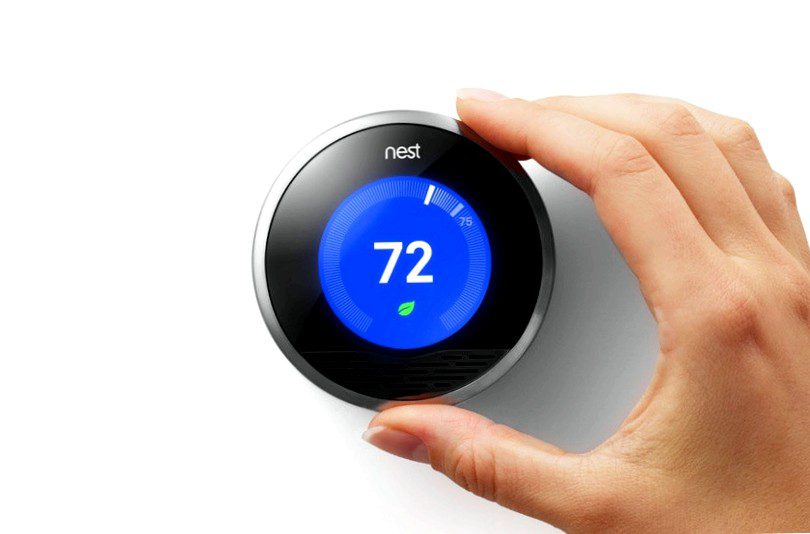The internet of things – the new target of hackers
In today’s modern technology environment, all equipment is connected and can be controlled remotely through the Internet. The Internet of Things (IoT) refers to a state in which various devices are connected to each other using sensors and networks and can communicate intelligently with each other. This advanced technology offers many advantages, but also carries risks.
Hackers and data thieves have targeted the Internet of Things and are using this connection to infiltrate devices and steal personal information. With every Internet-connected device a potential target, businesses and individuals alike are at risk of falling victim to cyberattacks. Consequences can be severe, such as identity theft and financial loss.
It is important that end users and businesses are aware of the potential risks and take appropriate security measures to protect the Internet of Things from cyberattacks. This includes using strong passwords, updating software in use, and avoiding unnecessary information on the network. Given the increasing interconnectedness in the modern world, protecting the Internet of Things will be one of the biggest IT security challenges of the future.
The Internet of Things: a paradise for hackers and data thieves
The Internet of Things (IoT) is considered one of the most important technologies of the 21st century. The Internet of Things has become an integral part of the 21st century and is increasingly integrated into our everyday lives. In the process, IoT devices such as smart homes, wearables and industrial machines have access to the Internet and can communicate with each other. This makes it possible to make everyday life more efficient and work more productively.
However, the IoT is also a huge security vulnerability that can be exploited by hackers and data thieves. Unlike traditional computer networks, IoT devices are often inadequately protected. They have old software versions, weak passwords, open ports and often even unencrypted data transmission.
These vulnerabilities can be exploited by hackers to penetrate the network, spy on data, manipulate or even cripple devices. Hospitals, factories or transport systems are particularly affected, with serious consequences to be expected from a successful attack.
- To protect against cyberattacks, IoT companies must regularly update their devices, implement strong authentication and encrypted data transmission, and create backups.
- Users should also take care to use their devices securely and regularly change the password, perform firmware updates and protect sensitive data.
- As the IoT grows inexorably and impacts more and more areas of our lives, all stakeholders need to take the security risks seriously and take appropriate action.
The Internet of Things has the potential to revolutionize our world and make our lives easier and more convenient. But we must not forget that it poses an immense threat from hackers and data thieves, which can only be combated with comprehensive security measures.
The Internet of Things is increasingly targeted by hackers and data thieves
The Internet of Things (IoT) is ubiquitous in today’s world. Smart home devices, wearables and even medical devices are connected to the Internet, enabling unprecedented connectivity. But this networking and connectivity also harbors risks. A major risk is the vulnerability of IoT devices to cyberattacks.
The number of attacks on IoT devices has increased dramatically in recent years, as they are often inadequately protected. Hackers exploit vulnerabilities in the firmware of IoT devices to access sensitive data or even take over entire systems. This data can include personal information such as passwords, credit card information or health data.
Another well-known example of IoT devices being abused were the attacks on cameras and routers, which were used by hackers as part of a botnet to launch massive DDoS attacks on large companies and websites. This shows that even devices that do not appear to have direct access to sensitive data can be misused to cause harm.
It is therefore critical that manufacturers of IoT devices are aware of the risks and take the necessary steps to protect their devices. End users also need to do their part to ensure the security of IoT devices through strong passwords or regular firmware updates.
- The Internet of Things (IoT) is becoming increasingly popular.
- IoT devices are more vulnerable to cyberattacks.
- Hackers exploit vulnerabilities in IoT device firmware to access sensitive data or take over systems.
- It is critical that IoT device manufacturers ensure their devices are secure.
Examples of successful attacks on the Internet of Things
The Internet of Things (IoT) is increasingly becoming a target for hackers and data thieves. The networking of devices and systems provides numerous attack vectors through which attackers can penetrate the network and steal data or perform manipulations.
A prominent example of a successful attack on the IoT is the Mirai botnet attack in 2016. The Mirai bot infected millions of IoT devices and used them to launch distributed denial of service (DDoS) attacks against multiple targets. Attacks have been so intense that they have even paralyzed Internet access for entire regions.
Smart home systems are also at risk. In 2018, an attack was reported on the Amazon Echo device, where a hacker was able to obtain personal data of the user via voice command. Even medical devices such as insulin pumps and pacemakers are not safe from attack. In 2017, critical vulnerabilities were discovered in insulin pumps that allowed an attacker to change the dosage or disable the devices completely.
It remains to be seen how the security situation in the IoT sector will develop in the future and what new threat scenarios will emerge. The fact is, however, that comprehensive securing of IoT devices and systems is essential to protect yourself and your data.
IoT needs better security measures
The Internet of Things (IoT) has become a target for hackers and data thieves. A large number of applications and devices used in companies and private households are vulnerable to external attacks. Effective measures are needed to ensure the security of IoT systems.
One important measure is the implementation of encryption technologies. These can help prevent data interception and improve device protection. The use of two-factor authentication can also help prevent unauthorized access.
Another important aspect of securing IoT is regularly updating software and operating systems. These updates can help close security gaps and address vulnerabilities. It is also important that IoT devices and systems are configured appropriately to minimize potential attacks. The use of firewalls and intrusion protection systems can help achieve this.
- Implement encryption technologies
- Use two-factor authentication
- Regularly updating software and operating systems
- Configuration of IoT devices and systems
These measures are an important step in securing IoT devices and systems. However, it is also important that IoT device manufacturers live up to their responsibilities and consider security aspects from the outset when developing IoT devices. This is the only way to increase consumer confidence in IoT systems and realize the full potential of IoT.

Securing the Internet of Things
The Internet of Things (IoT) opens up many new opportunities, but it also presents us with complex security challenges. Hackers and data thieves have already begun to target the IoT, and it is becoming increasingly important to better protect the IoT.
One way to make the IoT more secure is to change the default passwords and names for IoT devices. Most attackers use default passwords to gain access to IoT devices. By forcing manufacturers to change users’ passwords and names individually, it becomes much more difficult for attackers to hack the devices.
Another important security feature is encrypted data transmission. Without encrypted data transmission, attackers can access data exchanged between IoT devices and servers. End-to-end encryption ensures that data can only be read by the targeted parties.
- Increase IoT security:
- Changing default passwords and names
- Encrypted data transmission

Finally, the use of blockchain technology can make the IoT more secure. Blockchain places data into blocks that are encrypted and securely linked together. As a result, the data in these blocks is secure and cannot be tampered with. This technology can help make the IoT more secure and resilient to cyberattacks.